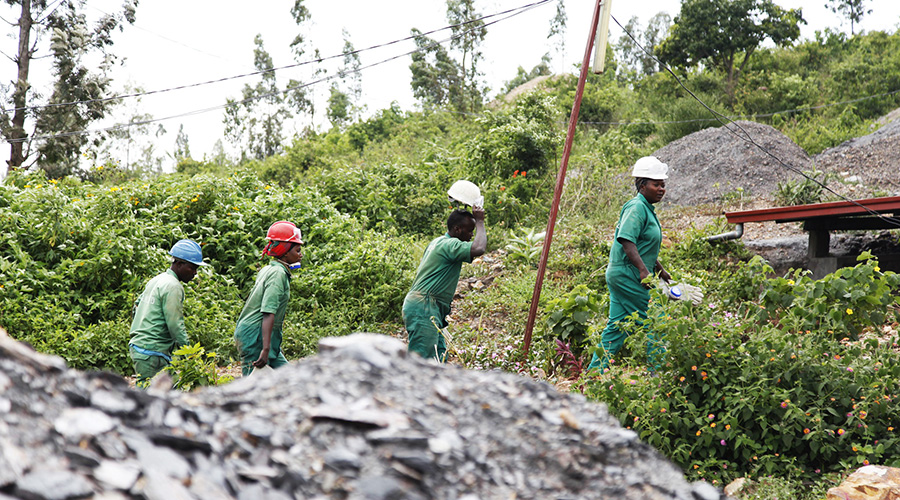

Mining accidents in various sites across the country continue to claim lives as many miners don’t comply with safety and health standards and local authorities’ reluctance to curb illegal miners.
Jean de la Paix Bariyanga builds tunnel pillars that protect the roof of mining shafts from caving in.
He told The New Times that he had witnessed mining deaths mainly caused by the indifference of mining firms in protecting workers and illegal miners who do not comply with safety and health standards and companies unwilling to invest in complying with mining standards.
Bariyanga said that many workers can be found without helmets, protective gear including face masks and gloves while others do not construct supporting pillars in tunnels to avoid accidents.
"In addition, the owners of mining firms do not insure workers so that when there are accidents workers get compensated. For instance, our company has not insured us and doesn’t pay our pension contributions,” he said.
According to the report from Rwanda Mines Petroleum and Gas Board (RMB), Ngororero District recorded the highest number of accidents in 2018 and 2019 among other districts that include Kamonyi, Rutsiro, Muhanga, and Rulindo.
The report indicates that at least 116 mining deaths were recorded in 2018 and 106 in 2019.
John Kanyangira, the Director of Mining Inspection told The New Times that of the 2019 deaths, 47 deaths were blamed on illegal mining in both mining and quarries and that mining deaths in quarries alone increased from 12 to 20 deaths in 2018 and 2019 respectively.
Status of standards compliance
The official explained that in 2018, only 23 per cent of mining firms were complying with mining standards and 40 per cent in 2019. That means that firms failed to comply with safety and health standards, waste management, modern mining operations, environment protection, processing, infrastructures, community relation and others, he said.
"We observed that they had unsafe tunnels and pits, poor waste management, poor washing techniques which leads to losing minerals productivity and mining deaths,” he said. At least 50 per cent of minerals disappear due to artisanal mining and with modern techniques, The Government targets $1.5 billion in annual revenues from mineral exports by 2024.
All these have led us to launch reforms in the sector in terms of the number of licenses we provide,” said Kanyangira.
"The challenges that have been preventing from reversing the trend of mining deaths include Low financial capacity to invest in mining infrastructure that meets standards. They have to invest in mining to ensure all standards are complied with. That is why new reforms have insisted on financial capacity as the basis of providing mining licenses.
With financial capacity, they will ensure professionalization of mining to move from artisanal mining to modern mining that meets safety and health standards,” he said but added that it must go hand-in-hand with regular inspection to ensure that what they pledged are complied with.
"Many companies have lost their licenses due to lack of technical and financial capacity and recording many mining accidents and deaths in their operations. We remain with companies that can try to comply.
We used to have over 300 companies but there are currently only 116 companies with only about 200 licenses which we found with the financial capacity to comply with mining standards,” he explained.


